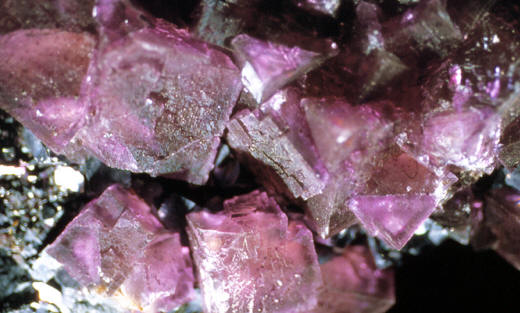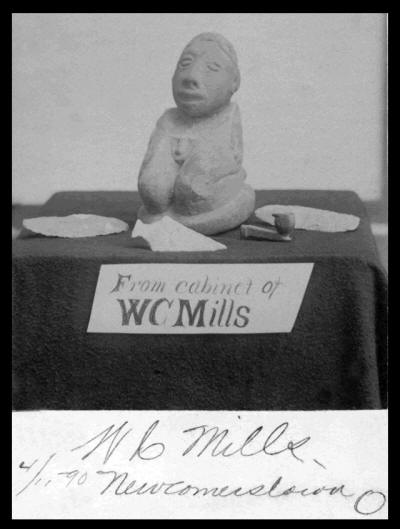|
|
|
The Anna and Cahokia figures are the largest of the four statues. The cast of the Anna figure measures just about 12 inches (30.5 cm) tall, 9 3/4 inches (22.2 cm) wide and 7 3/4 inches (19.6 cm) from front to back. The Angel site and Johnston figures are approximately 10 inches (25.3 cm) tall. Moorhead reports that the Cahokia figure measures 12 inches (30.5 cm) tall. |
|
|
|
|
The Cahokia figure remains the most mysterious of the four fluorite statues because it's current location is unknown. Apparently, the only reference that describes it comes from Moorehead (1929) where he only writes two sentences. He does use a photograph to illustrate the figure. From the illustration it's plain to see that the Cahokia figure is so close in size and design to the Anna figure that one wonders if the same person might have made both of them. Moorhead describes the material as fluorspar (fluorite) and measuring "about" 12 inches (30.5 cm) high. He also says that "it was found on the bluffs directly east of Cahokia." |
|
|
|
|
The Anna, Angel site, Cahokia and Johnston figures were made from large fluorite crystals that are believed to have come from outcrops located in extreme southeastern Illinois or northwestern Kentucky. Glenn Black writes that---"The material from which the (Angel site) figurine was made, a yellowish fluorite, was obtained either from the Rosiclare, Illinois or Marion, Kentucky areas. Large deposits of this mineral are found in both places today, and outcrops of it must have occurred in preliterate (pre-European contact) times." |
|
|
|
|
The manufacturing technique that was used to shape these fluorite figures would have differed from the process used to shape figures made of sandstone, limestone or any of the harder materials such as granite. The traditional method of first hammering or pecking the surface into shape then grinding and polishing is a technique that couldn't be used on fluorite. Fluorite has a hardness scale of 4 and is much to soft and fragile. Because of its "unruly cleavage characteristics," a hammerstone could not be used in the manufacturing process. One strike would shatter the material. Whatever technique was used to make these figures the process was probably restricted to either cutting and grinding, then polishing as a final step. |
|
|
In the modern world of photography we see visual images that show how people have lived and dressed during the last two thirds of the Industrial Revolution. The technology isn't quite the same but similar information has been recorded from Mississippian sites in the form of carved stone statues, pipes, engraved shells and sculpted ceramic vessels. These are the material mediums that provide archaeologists with the best images of Mississippian people. So in some ways, the three fluorite figures described in this report might be compared to old photographs but actually better because they are in three dimension. |
|
|
"REFERENCES"
1896,
Wilson, Thomas, Smithsonian Annual report,
"Prehistoric Art: Or The Origin Of Art As Manifested In The Works Of
Prehistoric Man," pp. 480-481. |
|




